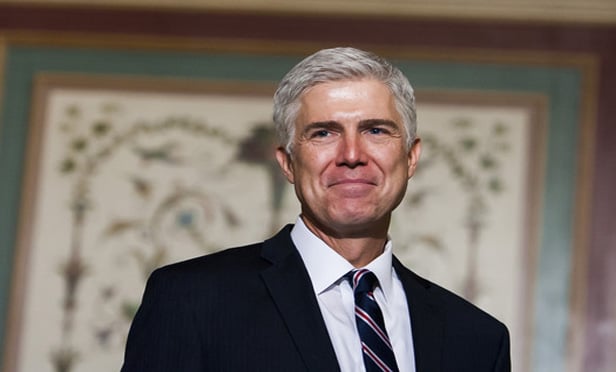Features

Hiding Assets in California
Often, asset protection advice is bereft of any discussion of California exemption statutes — which often provide the most efficient and safest asset protection. But to properly protect an asset in California, it's generally best to understand and maximize exemptions.
Features

Structured Dismissals in Deviation of the Bankruptcy Code Priority Scheme
In a recent decision, the U.S. Supreme Court held that, without the consent of impaired creditors, a bankruptcy court cannot approve a "structured dismissal" that provides for distributions deviating from the ordinary priority scheme of the Bankruptcy Code. The ruling carries with it implications that may affect both pending and future bankruptcy proceedings.
Features

Sixth Circuit Trims Bank's Good-Faith Defense to Fraudulent Transfer Claims
<b><i>Part One of a Two-Part Article</i></b>The issue of what constitutes a good-faith defense to a fraudulent transfer claim is a murky question that has produced a wide variety of reported decisions from appellate courts over the years. But a recent Sixth Circuit opinion sheds some clear light on a complicated fact pattern.
Features

Restaurant Industry Chapter 11 Bankruptcies
The past year has brought a wave of restaurant businesses filing for reorganization in Chapter 11. With inherently low profit margins, increased competition, limited pricing flexibility and a propensity for expansion without the support of underlying business fundamentals, the industry is particularly susceptible to business failure.
Features

Would <b><i>Jevic</i></b> Have Come Out Differently with Gorsuch?
In <I>Jevic</I>, the members of SCOTUS — sans Neil Gorsuch, who had not yet been confirmed — declined the invitation to "upend" the absolute priority scheme. The question presented: "Can a bankruptcy court approve a structured dismissal that provides for distributions that do not follow ordinary priority rules without the affected creditors' consent?" SCOTUS's answer: a resounding "No." Would Gorsuch have changed that?
Features

Professional Fees May Not Be Capped by Standard Carve-Out Provisions
Secured creditors and debtor-in-possession (DIP) lenders that rely on standard carve-out provisions to limit the impact of bankruptcy professional fees on their collateral would be well-advised to take notice of a U.S. Bankruptcy Court decision from earlier this year.
Features

Split Ninth Circuit Requires Default Interest to Cure Default
A Chapter 11 debtor "cannot nullify a preexisting obligation in a loan agreement to pay post-default interest solely by proposing a cure," held a split panel of the U.S. Court of Appeals for the Ninth Circuit.
Features

Expansion of the <i>Barton</i> Doctrine To Unsecured Creditors' Committees
The U.S. Court of Appeals for the Ninth Circuit recently held in <i>Blixseth v. Brown</i> that under <i>Barton v. Barbour</i>, a plaintiff must obtain a bankruptcy court's permission before commencing a lawsuit in another forum against a member of the committee of unsecured creditors, and that <i>Stern v. Marshall</i> does not preclude bankruptcy courts from adjudicating such claims on the merits.
Features

Make-Whole Mayhem
<b><i>Uncertain Treatment of Make-Whole Premiums Upon Bankruptcy-Induced Acceleration and Redemption of Indentures</b></i><p>Make-whole premiums are essentially prepayment penalties imposed on borrowers when loans are paid off in advance of their maturity dates. These premiums remove the borrowers' incentives to refinance whenever interest rates drop, and provide stability and predictability to the world of secured lending.
Features

Navigating the Bankruptcy Court's Power to Modify A Secured Creditor's Lien
This article focuses on the impact of section 552 of the Bankruptcy Code, which addresses the effect of a bankruptcy filing on property acquired by the debtor after the filing of the bankruptcy case (referred to as "after-acquired property") and proceeds of pre-bankruptcy collateral.
Need Help?
- Prefer an IP authenticated environment? Request a transition or call 800-756-8993.
- Need other assistance? email Customer Service or call 1-877-256-2472.
MOST POPULAR STORIES
- Warehouse Liability: Know Before You Stow!As consumers continue to shift purchasing and consumption habits in the aftermath of the pandemic, manufacturers are increasingly reliant on third-party logistics and warehousing to ensure their products timely reach the market.Read More ›
- Major Differences In UK, U.S. Copyright LawsThis article highlights how copyright law in the United Kingdom differs from U.S. copyright law, and points out differences that may be crucial to entertainment and media businesses familiar with U.S law that are interested in operating in the United Kingdom or under UK law. The article also briefly addresses contrasts in UK and U.S. trademark law.Read More ›
- Inferring Dishonesty: The Fifth Amendment and Fidelity CoverageDishonest employees always have posed a problem for businesses. The average business may lose 6% of its annual revenues to employee fraud, and cumulatively the impact of employee theft on the economy is estimated to be $600 billion annually. <i>See</i> Association of Certified Fraud Examiners ("ACFE"), 2002 Report to the Nation on Occupational Fraud & Abuse, at ii, 4 (2002), available at <i>www.cfenet.com/publications/rttn.asp.</i> Although the average loss through employee embezzlement is $25,000, where computerized financial records or transactions are involved, the average loss increases nearly twentyfold. <i>See</i> National White Collar Crime Center, <i>WCC Issue: Embezzlement/Employee Theft,</i> at 2 (2002), available at <i>http://nw3c.org/downloads/Computer_Crime_Weapon.pdf.</i>Read More ›
- When Is a Repair Structural or Nonstructural Under a Commercial Lease?A common question that commercial landlords and tenants face is which of them is responsible for a repair to the subject premises. These disputes often center on whether the repair is "structural" or "nonstructural."Read More ›
